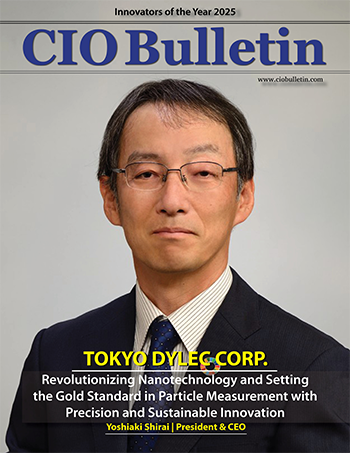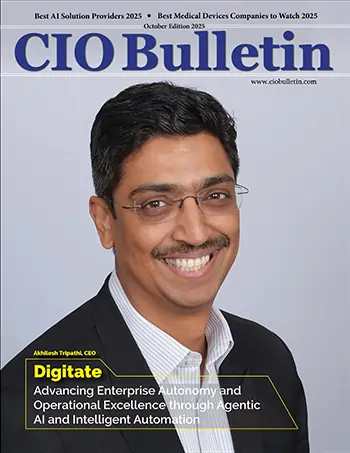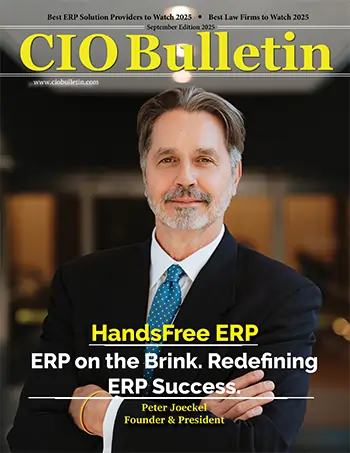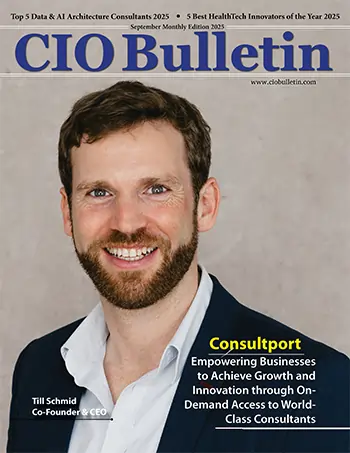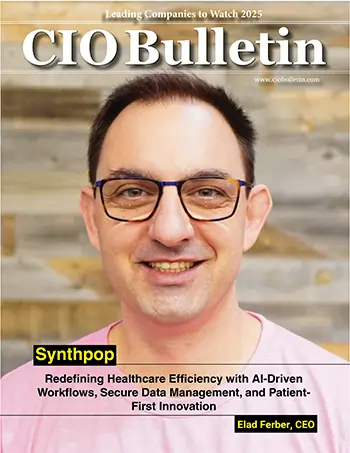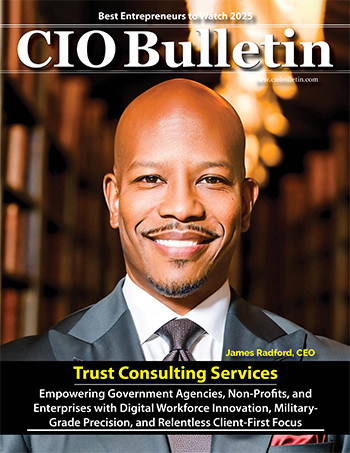Home Technology Artificial intelligence Agentic AI's Green Journey: Un...
Artificial Intelligence
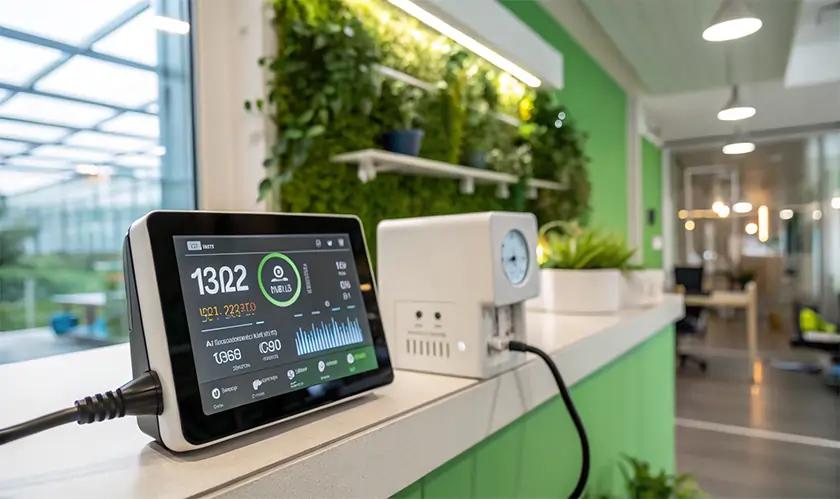
CIO Bulletin
08 September, 2025
-Prasanna Chandran Melnatami Krishnaram
Agentic AI systems are a hot topic in the fast-paced world of artificial intelligence. These systems can autonomously plan, act, and learn from their own performance, making them incredibly efficient and adaptable. While their potential is huge, a major challenge is their high energy consumption. This article explores the energy use of agentic AI workflows and offers strategies for how we can track, measure, and optimize their power usage.
Agentic AI workflows consist of several distinct phases, each contributing differently to the overall energy consumption. These phases include planning, tool-use and execution, inference and reflection cycles, and iteration and termination. Understanding the energy demands of each phase is crucial for optimizing the performance and sustainability of agentic AI systems.
Planning Phase: The initial phase involves the agent's large language model (LLM) inference, where tasks are decomposed and strategic plans are formulated. This phase requires significant GPU/TPU and CPU power, as the LLM generates a multi-step plan. The energy cost also includes running the planning algorithm and any overhead from the agent framework, such as LangChain or CrewAI.
Tool-Use and Execution Phase: During this phase, the agent utilizes various tools, such as search engines, code interpreters, or APIs, to execute steps and gather information. The energy footprint is determined by the hardware running the external tools, local tool execution, and data transfer between components. The software energy cost is incurred by the tool itself and the agent's logic managing the tool's execution.
Inference and Reflection Cycles: After a tool-use step, the agent often runs another inference cycle to analyze results, decide on the next action, or adjust its plan. Each subsequent inference call adds to the GPU/TPU energy expenditure, especially if the prompt contains a lengthy history of previous steps. The software energy cost is associated with each call to the LLM, particularly if the context window is large.
Iteration and Termination Phase: The agent continues executing and reflecting until it reaches a successful conclusion or a defined stopping point. The final summary and output generation consume energy from the GPU/TPU, and the total energy includes the accumulated overhead of all iterative loops and conditional logic.
To better understand the energy dynamics of agentic AI workflows, let's visualize the high-level process with a contextual diagram.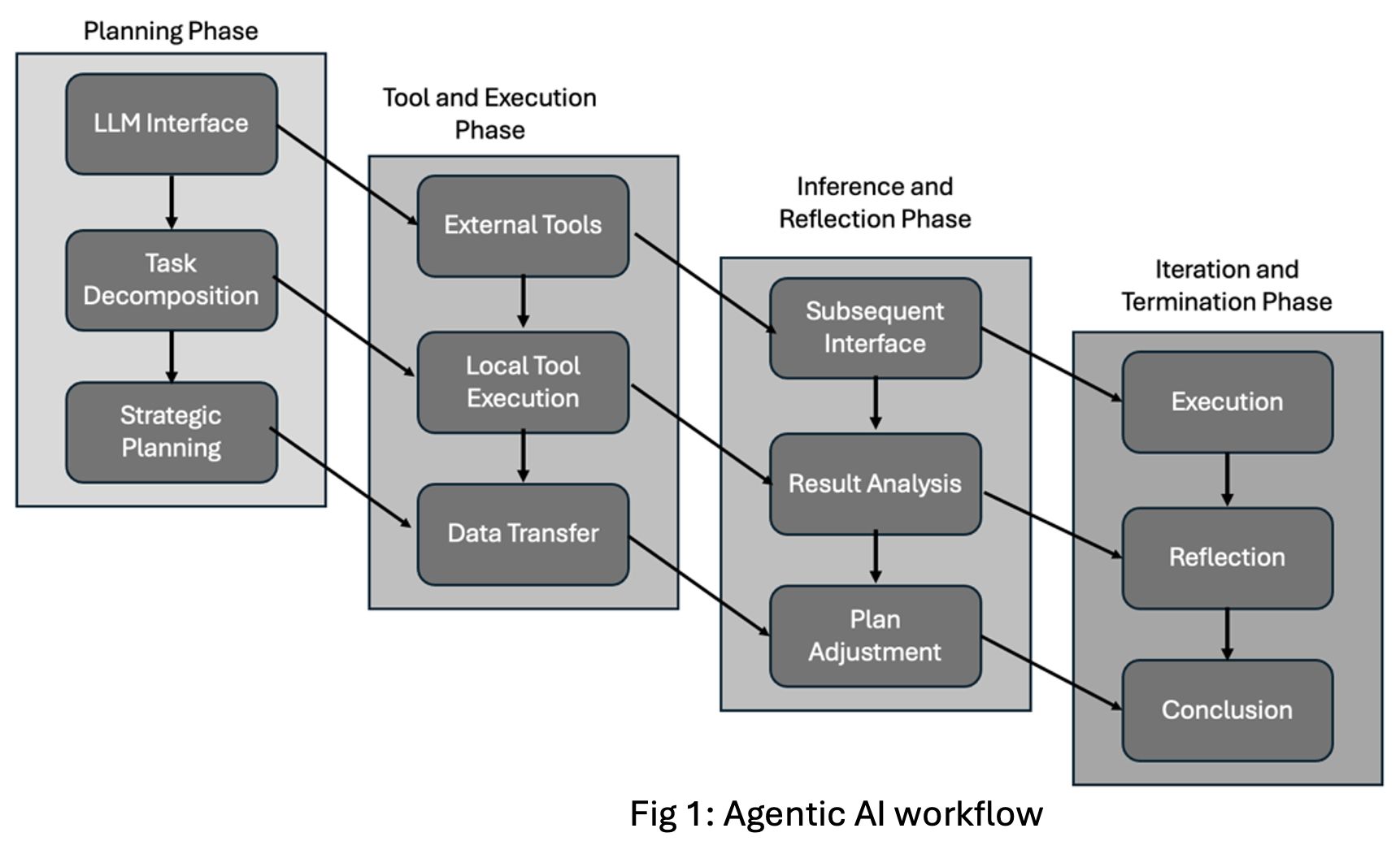
To accurately track and measure energy consumption in agentic AI workflows, a combination of physical and software-based tools can be employed. This table provides a concise overview of the different methodologies and tools used to measure energy consumption in agentic AI workflows, highlighting their advantages and limitations. This approach enables attribution of power usage to specific tasks and decision points, improving transparency and optimization opportunities. Collectively, these methodologies allow organizations to balance granularity, usability, and transparency in their efforts to optimize energy efficiency in AI-driven environments.
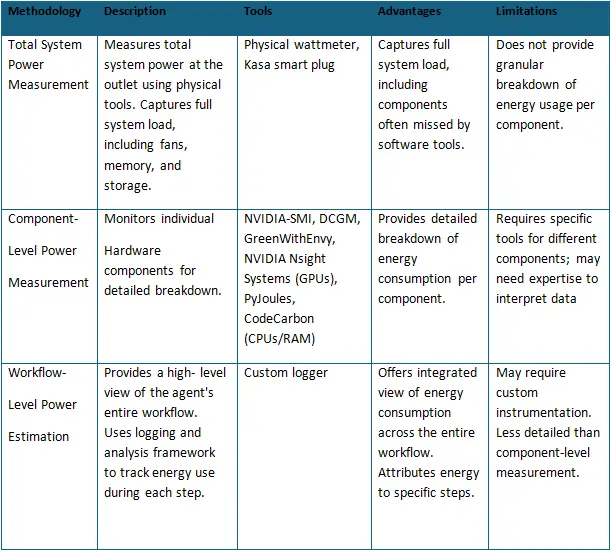
Table 1: AI Energy Measurement Methods
Practical Example: Personalized Health Monitoring
Imagine an agent tasked with monitoring an individual's health metrics and provide personalized recommendations. The energy consumption can be measured and optimized as follows:
Planning: The agent makes an LLM call to decompose the task into specific health metrics to monitor, such as heart rate, sleep patterns, and activity levels. Energy measurement involves logging the start and end of this initial LLM call and measuring the GPU power draw and CPU/RAM energy during this period.
Tool-Use (Data Collection): The agent uses wearable devices to collect health data. Energy measurement involves logging the duration of data collection and estimating the energy usage for the local processing of this data.
Reflection: The agent analyzes the collected data to determine any anomalies or trends. Energy measurement involves logging this subsequent LLM inference call and measuring its GPU power usage.
Tool-Use (Analysis): The agent runs a Python script to analyze the health data, identifying patterns and generating insights. Energy measurement involves logging the execution of the Python script and accurately tracking CPU and RAM energy usage during this step.
Final Generation: The agent uses the LLM to generate personalized health recommendations based on the analysis. Energy measurement involves logging the final LLM call and measuring its GPU energy cost.
By aggregating these measurements and attributing them to specific steps, a detailed breakdown of the agentic AI's energy consumption can be created, enabling optimization and energy awareness.
By understanding and optimizing the energy consumption of agentic AI workflows, we can enhance the sustainability and efficiency of AI systems, paving the way for more responsible and energy-aware AI applications. Relying solely on total system power measurement provides an incomplete picture. Instead, a successful strategy combines detailed component-level power measurement to pinpoint energy use by specific hardware and specific phases within workflow. By integrating these methods, developers can move beyond general observations to create a precise, actionable framework for building more sustainable and energy-efficient AI systems, paving the way for responsible and informed AI development. Energy awareness in agentic AI is crucial for sustainable AI development.
About the Author
Prasanna Chandran M.K. is a senior technology leader at Wipro, managing critical enterprise solutions for a leading global technology company. With a diverse background spanning industrial automation, SAP ERP, cloud computing, and artificial intelligence. He holds a Bachelor’s degree in Electronics Engineering and an MBA, and is recognized as a Senior Member of IEEE (USA) and a Fellow of both IET (UK) and IETE (India). Based in Austin, Texas, he enjoys spending time with his wife and two children, reading and watching cricket.
